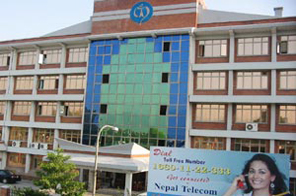Telecom operators in by guess and by gosh mode
KATHMANDU: The telecom service providers today blamed the power outage, poor infrastructure and remote geographical conditions for the low quality of telecom services.
“The long hours of power outage has hit Nepal Telecom’s battery backup design that was capable of supplying power for only four to five hours,” said Bishwanath Goel, managing director of Nepal Telecom that provides GSM and CDMA services in all 75 districts of the country.
“Most of the complaints are related to Radio Frequency Optimisation (RFO) but 16-hour power oputage has hit its rapid expansion,” he said adding that NT received 77 complaints related to RFO from January to June this year.
“NT is installing generators in 10 BTS towers, 12-hour back-up capacity will be installed in 10 BTS towers and solar equipment in another 10 BTS towers,” he repeated the plans of NT to counter complaints.
However, Goel did not explain why NT had not improved the quality of its services even though the load-shedding hours have come down to 10 hours a week from 16 hours a day.
Chandi Shrestha of Spice Telecom — the telecom service provider under the brand name Mero Mobile — also described his company’s plans to sell 25,00,000 SIM cards by the end of this year.
“Most of the problems arise due to consumers’ habits,” he said adding that consumer education is also key to better telecom services. He, however accepted that the telecom service providers have failed to educate consumers.
He urged the telecom regulator to play the role of facilitator, whereas chairm of the regulator — Nepal Telecom Authority (NTA) — Bhesraj Kandel advised the operators to upgrade service quality alongwith the service expansion.
“Regulator should also interfere, the operators do not abide by regulations,” he said citing the example of NTA forcing them to reduce interconnection charges.
“NTA as regulator has also fixed parameters for qulaity of service,” Kandel added. NTA has licensed three operators for basic telephony service, two for cellular mobile service, eight for network service, 38 for Internet service, 90 for VSAT and three for GMPCS.
“The Internet Service Providers (ISPs) are lagging behind in comparison to telecom operators,” said Pawan Shakya, president of Association of ISPs.






